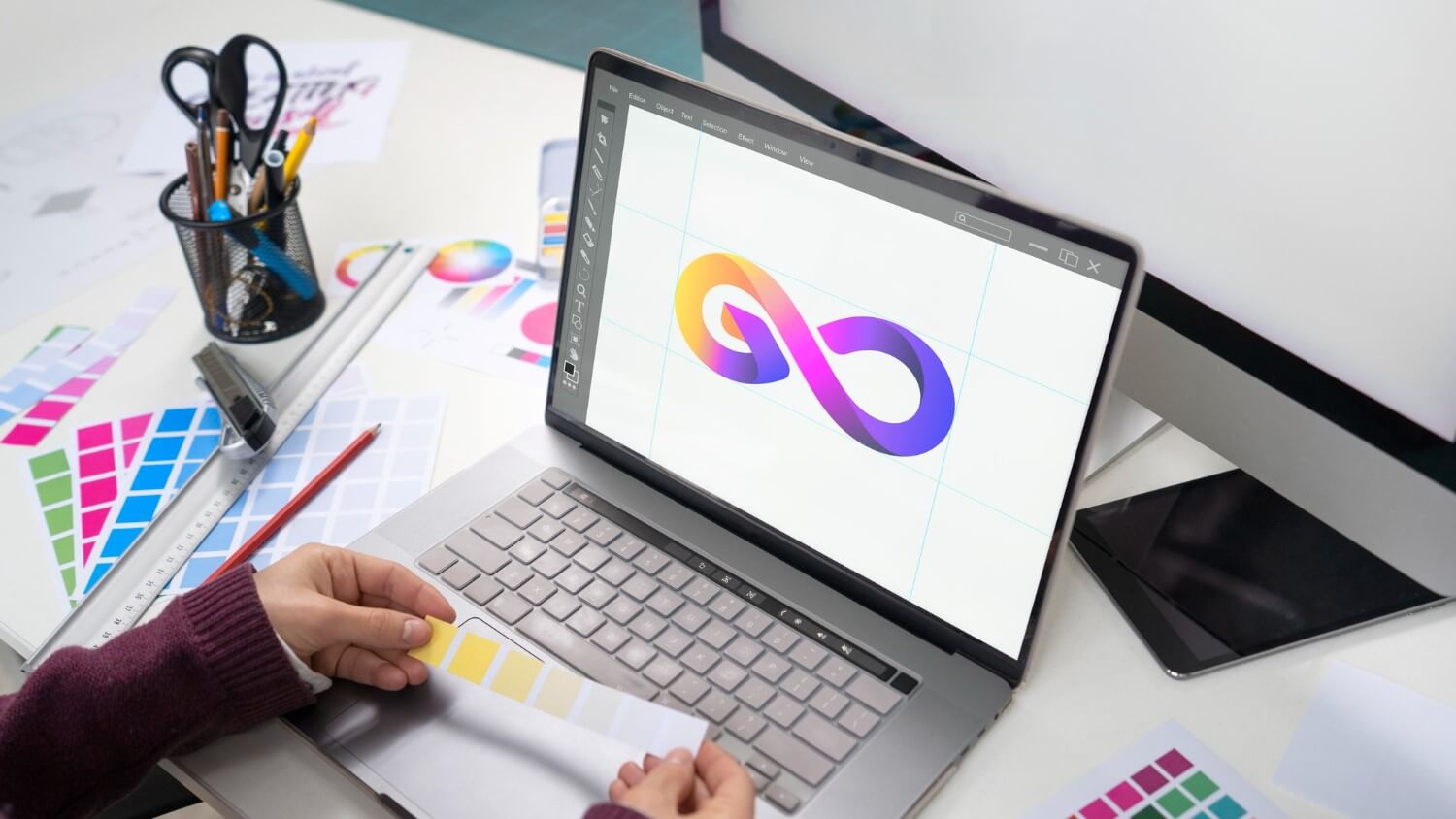What is the first thing that comes to your mind when you think about a brand? Apart from their products, maybe the logo and the color combination used?
The fact that you can recall them from these factors is because that’s precisely what they wanted when they designed their brand.
Just like your personal identity makes you unique, your brand design is the special sauce of your business that sets you apart from 10 others.
Now, if you’re looking to launch your start-up or reinvent your brand, an exciting opportunity lies ahead to change the way your prospective clients think about your business. And the process that leads you there is called – Brand Design.
But what exactly is brand design? What does it have to do with brand identity? And what components make up the design?
Let’s dive into the details!
What is brand design and what is brand identity?
Simply put, brand design is all about creating a brand identity that perfectly reflects your brand.
It’s often used interchangeably with – brand identity.
Brand design is the collection of all elements that a company creates to portray the right image to its consumer. It involves all the factors that make you instantly recognizable to your customers, starting with logo,typography, colors, identity system through layout, grid, composition, print design, social media graphics, web design and much more.
Brand design is tangible and essentially what your audience can see. By creating a recognizable, trusted and consistent image of your company, you’ll be able to win your customers’ attention and loyalty. Without that differentiation, they could easily flock to your competitors.
Why is it important to stick to a brand style guide?
As stated by evolve, a brand style guide is basically a document containing a set of design instructions for designers. It is created to keep the style of any brand and it’s vision, clear and consistent.
A style guide includes all the important guidelines for your brand’s identity and voice, especially the elements such as:
- Branding brief
- Typefaces
- The logo and any derivatives
- Copy and tone
It outlines your design assets, when and how to use them, as well as any design do’s and dont’s for your brand—and ensures that any future design is in line with your brand identity and generates the right perception with your audience.
And having a style guide here is important as it allows you to maintain control over the design.It helps keep your brand identity consistent, recognizable, and ownable, even as several different people develop content for your brand.
It communicates your company’s design standards to your whole group. And having this document to reference for expected standards will make the lives of your designers, writers, and developers much easier and give them a solid framework to use as a starting point for their work.
What components make up a good brand style guide?
A brand style guide takes some of the key components of your brand and translates these into a key document that helps deliver a consistent message to your audience. The document provides everyone who works with your brand clarity on how to deliver a consistent experience across all media.
There are a few important pieces of information that may be included in a Brand Style Guide-
- Mission/Vision
That’s the mission and values of your company. What beliefs drive your company? What is the core purpose, philosophy, and goals of the company?
- Brand persona
It’s the way your brand speaks to your target audience and how it behaves, giving a face to the abstract characteristics, values, and voice that businesses cultivate.
There are five main types of brand personalities with common traits. They are –
- Excitement: Unabashed, cutting-edge, carefree and youthful
- Sincerity: down-to-earth, kindness, thoughtful
- Ruggedness: Rough, strong, outdoorsy and athletic
- Competence: Successful, accomplished, influential, secure and trustworthy
- Sophistication: Elegant, prestigious, luxurious and classy
Customers are more likely to purchase a brand if its personality is similar to their own.
- Brand tone
The brand tone is the way your company communicates with your audience, including your choice of words, writing style and emotional tone.
It ensures that your communication is standardized. In this way, the audience will identify consistency, which guarantees gradual habituation.
- Brand color palette
The main consideration of colors is the way certain colors evoke certain emotions.
People have psychological ties to different colors, and using branding colors and logo colors strategically can have a serious impact on how your brand is perceived by your audience. Also repetition of the same color can strengthen your brand awareness.
- Logo
A logo is a symbol made up of text and images that identifies and holds the visual association to your business.
The logo design is the cornerstone in your brand identity that shows what your company does and values. It usually consists of a symbol or brandmark and a logotype, along with a tagline.
- Typography
The typography is intentionally designed to showcase a brand’s style and character. It commands attention, works as the visual interpretation of the brand’s voice and power to reveal your brand’s personality.
- Imagery
Brand imagery is every visual aspect used within communications that represent your brand’s identity. This includes still photography, illustrations, video and all forms of graphics.
The images that make up your brand imagery can appear in a variety of forms, starting from still photography, print ads, illustration, billboards to Instagram, websites , video and all forms of graphics.
They should be expressive and capture the spirit of your company and act as the embodiment of your brand personality.
Your brand design / brand identity is what sets you apart from the endless sea of competitors. So, as you build your company’s brand identity, make sure that each element is actually contributing to the overall perception you want to imprint in your customers. That’s what is going to help you to build brand recognition and brand loyalty in the long term.
Once you have figured out what type of branding design is right for you, a designer can create exactly what you need based on the branding inspiration and brand personality details you provide.
At IT Conquest we provide a Brand Style Guide service that will work as a guideline for all your posts, website theme, colors, content, etc.
If you are looking to rebrand your company or launching your start-up, let’s get in touch to discuss your project. Our team will breathe life into your brand and help you tell your story.



